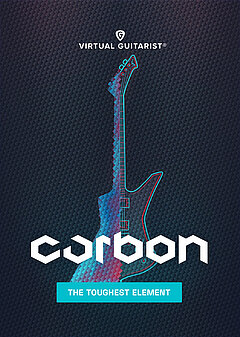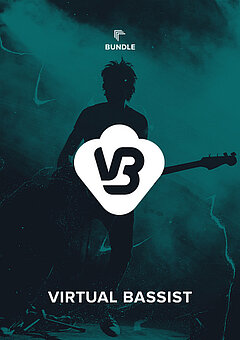How to Score Music for Games and Film
How to create music for visual media that captures the emotion on-screen, supports the action and resonates with viewers.
JUNE 14TH, 2020
Scoring is often considered to be a dark art in the music industry. The main point of distinction between composing vs. scoring for visual media is that when you’re writing for film, TV or games, your creative direction is largely dictated by forces outside your control. The director has a vision. The producer has another. There are certain demands the action on-screen makes of you that are unavoidable.
Any notion of song structure disappears, because you’re no longer writing in isolation--your music now has to complement another medium, one that is fixed, created by someone else. In this article, we’ll demystify the practice of composing for various forms of visual media and help navigate some of the issues that frequently arise.
Scoring for Linear vs. Non-linear Media
There’s a tremendous distinction between music for film/TV and that of video games: it’s impossible to know what’s going to occur since every player’s experience is different, and as a result, non-linear. For linear media, you can load a video file into your DAW of choice and write music for each specific moment in time. The relationship between music and the events occurring on-screen is fixed (unless the crew decides to change it while you’re working on it, which is virtually guaranteed).
Not so with games, where your task becomes scoring a location/level and the emotion the designers want the player to feel. Every playthrough is different, so naturally every player will have a unique experience not shared by anyone else. Audio middleware tools like Wwise and FMOD allow composers to write multiple different bits of music and set conditions for how it will change in response to game events.
Detailing the different practices of each medium would require multiple articles, so moving forward we’ll be focusing on all three as a single unit. There will undoubtedly be nuances to each that require you to take a deeper look, but we’ll focus on their commonalities so you have a general idea of what’s entailed.
Dramatic Writing
In essence, scoring music consists of capturing the feeling of the events on-screen and translating them into music. In a very general sense, this means intense action = loud and powerful, sadness = subdued and minor, joyful = light and playful, etc. It takes years of study for this to become second nature, so don’t expect to understand exactly what the picture needs right away; play with different ideas, styles and tonalities until you feel like the music and picture start to lock in together. Then you can develop your ideas further.
If you’re unfamiliar with this process, it may be helpful to start by using a keyboard VST to get your ideas into the DAW. Once you solidify the melody, chords and any other details that feel appropriate, you can begin adding strings, woodwinds, brass, synths and other instruments as desired.
If you feel like a particular moment calls for a specific instrument, you’ll likely benefit more by ditching the piano step completely. For example, if there’s a particularly tense moment on screen, you might hear strings in your head, or strong guitar chunking that drives the action forward. As with all music composition: go with your gut! Don’t censor yourself too early; it’s typically more efficient to allow inspiration to flow when it possesses you and edit later.
Keeping the Score Simple
Given such a broad topic as scoring for visual media, it’s difficult to dive into specifics (considering so many of them are situational). What instrument best underscores a high-speed car chase? What are the appropriate moments to write absolute silence? During a romantic scene, is a soaring melody too overdone or cheesy? After all, knowing when to go all in and when to hold back is a highly delicate balancing act, and there’s no guide that can provide universally applicable answers.
While you’re still learning the foundations of this complex field, perhaps the best advice is to keep it simple. Use only a few instruments. Focus on representing one dominant emotion at a time. Don’t try to write a symphony--use only what you feel will make the screen/music relationship more whole, no more and no less. As you gain confidence, you’ll notice that you naturally become more adventurous, and you’ll make better choices in less time. Even if you feel quite comfortable with music production, not all the skills immediately translate to scoring music for film and games.
That said, there are a few things that should help you.
Recycle Themes
Not every moment needs to be paired with a melody. Very often, a continuous rhythm and chord hits are enough. Virtual Guitarist CARBON is an excellent tool for capturing on-screen action when all you have is a key and a rhythm. In modern film, TV and games, it’s common to use a heavily distorted guitar during high-energy moments to give the viewing/playing experience a gritty edge.
Re-use short melodies (called leitmotifs) and even entire sections of a song, making only slight tweaks. And don’t worry, this isn’t cheating; it actually deepens the experience for the viewer/player when you bring back themes used earlier on. You can do this to remind them of certain events and characters, helping to contextualize each scene and even provide a bit of foreshadowing; it also makes your job of composing music much easier, because you have less music to write! On even a small project, this can cut down on your workload by many hours.
How to Get Started With Scoring
Scoring for film, TV and games is a topic that deserves multiple books and possibly 4+ years at university--but if you want to get a taste of it, you can start with very little gear or experience.
Pull up a video clip that you enjoy but aren’t highly attached to (if it’s your favorite scene of all time, you’ll likely to stress yourself out attempting to do it justice). Put the suggestions in this article to work and simply start composing. Check out this interview with film composer John Massari, in which he shares his personal background and successes. We’ve also got this interview with Heitor Pereira, whose scoring-credits include: Shrek 2, Mission: Impossible 2, Black Hawk Down and more.
Scoring is an incredibly rewarding field, and the intense learning curve is more than worth the effort if you find that you sincerely enjoy it. Take your time and work at it every day, and you’ll build a portfolio you can use to track your progress. Once you’ve built it up a bit, you can show it to directors, producers, game designers and more; demonstrate your unique strengths; and build a career as a visual media composer!
Getting Work in the Industry
Even if you’re the greatest film/TV/game composer in the world, you can’t get work if no one knows about you! Join and start online conversations about creating movies, shows and games through Facebook Groups, Instagram posts (you can search hashtags used by creators and developers and leave comments on their posts), and other places your potential clients are already actively participating. Do not ask for work; give helpful feedback, compliments, and talk about the music they’re using (or lack thereof)--as long as you’re genuinely being helpful to them. Resist the urge to pitch yourself, because they probably won’t be receptive until they know and like you.
You must post your film/TV/game music online for people to know you exist, but to get people to engage with you: ask for feedback, not work. They’re much more likely to give you the former.
In the creative industry as a whole, it’s far more valuable to think of networking as making friends, not connections. Creators tend to only work with people they enjoy being around, so make a positive impression above all else. The more people you engage with on a personal level, the more you can slide what you do into conversation, and the more they’ll be excited to hear about it. A large network equals a lot of potential opportunity!
Now it’s Your Turn
If nothing else, create as much music as you can and build your visual media composing chops. Share what you create. Improve it. Actively make friends in the industry, especially outside of music and sound. Use tools like Virtual Guitarist CARBON to speed up your writing process and do a lot of the heavy lifting for you, especially if you’re finding it difficult to dig a melody out of your creative unconscious.
Get started without fear of making mistakes. The more you grow at scoring and composing music, the sooner you’ll be able to work on projects you love!
About UJAM
UJAM is a German-American maker of music technology co-founded by Hans Zimmer and Pharrell Williams that develops Virtual Instrument and Effects Plug-ins. With the Plug-in series Virtual Pianist, Usynth, Groovemate, Symphonic Elements, Virtual Guitarist, Virtual Bassist, Virtual Drummer, Beatmaker and Finisher and a range of software solutions (desktop, mobile, web), UJAM helps people to make music.
For press inquiries, please contact Özge Keskin: [email protected]
Stay up to date
Sign up and we’ll send you an e-mail with product news and helpful stuff every now and then. You may unsubscribe at any time.
Defy Limits
We develop software solutions that enable people to create, consume and interact with music.




